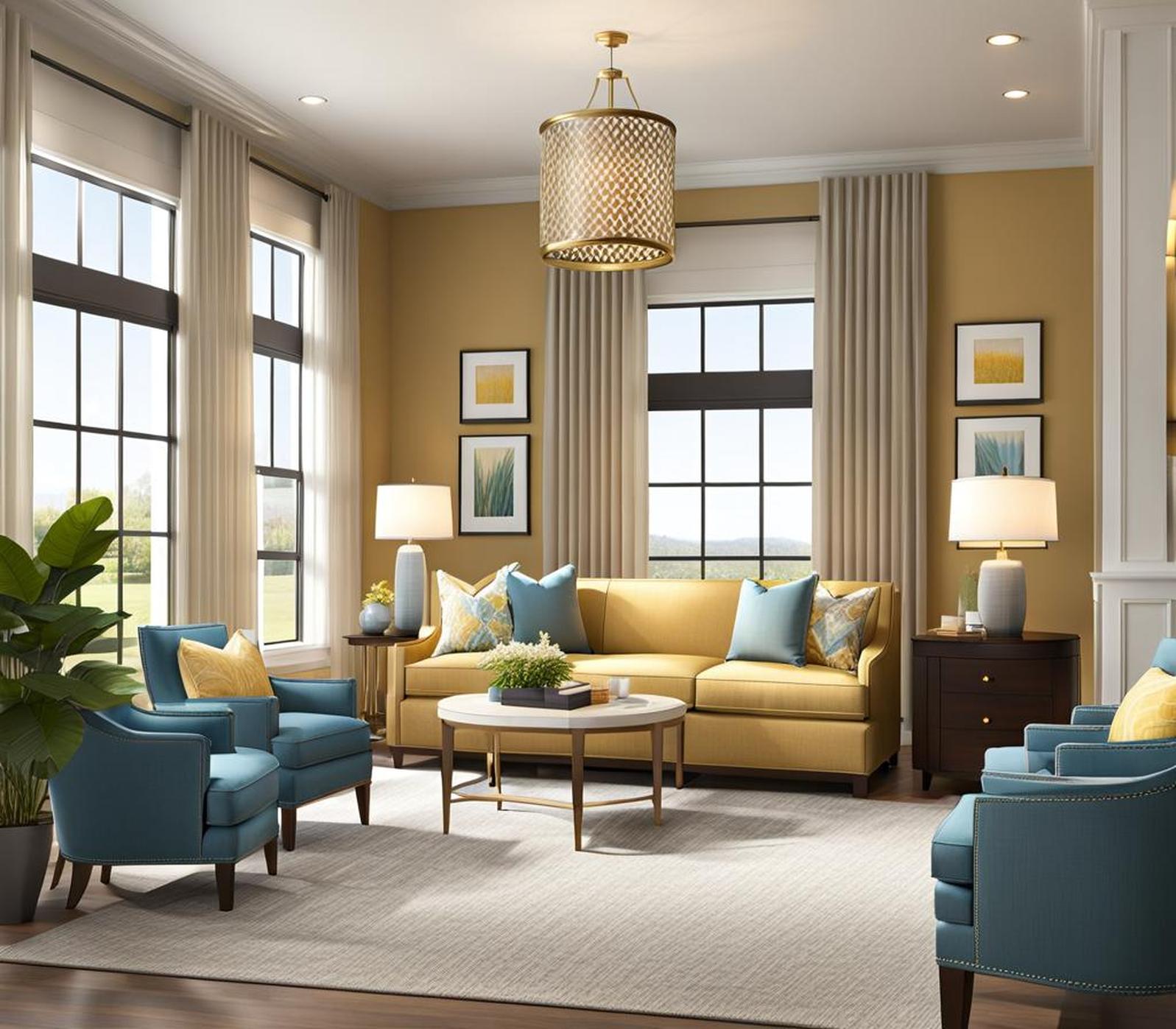Moving into an assisted living community can be an emotional transition, but optimizing the layout of your living space can help you feel comfortable and secure in your new home. With some strategic planning and design choices, you can create an assisted living room that promotes mobility, safety, and an overall sense of wellbeing.
We’ll cover how to create open floor plans for ease of movement, incorporate supportive furniture, add discreet storage solutions, and include homey touches to personalize the space.
Optimize with an Open Floor Plan
An open concept layout is highly recommended for assisted living rooms. By limiting walls and tight corners, you can enhance mobility with walkers or wheelchairs.
Aim for at least 3-4 feet of clear walking space throughout the room. This provides ample clearance to maneuver without bumping into obstacles.
- Strategically limit furniture pieces to only essential items to open up floor space.
- Look for multifunctional furniture such as storage ottomans or fold-out wall tables.
- Ensure the path between key locations like the bedroom, bathroom, and front door is obstruction-free.
The more you can open up floor space, the safer and more accessible the room will be on a daily basis.

Ensure Ample Clearance
It’s important to arrange furniture with adequate clearance for wheelchairs and walkers. Here are some key tips for allowing plenty of room to maneuver:
– Follow ADA guidelines which recommend at least 60 inches of turning space for wheelchairs.
– Allow enough space to make full turns around chairs or beds without bumping walls or other pieces.
– Position seating at least 3 feet away from tables or shelves to easily get in and out.
– Avoid blocking entranceways or paths between rooms with furniture or decor.
By keeping ample clearance around furniture, you can prevent injury and frustration when navigating tight spaces in a wheelchair or walker.
Incorporate Supportive Furniture
Selecting furniture designed for accessibility and comfort can make everyday living easier. Look for pieces with these senior-friendly features:
– Sturdy armless chairs with seat heights that make sitting and standing simpler.
– Adjustable beds that allow you to find a safe, cozy position for rest.
– Bedside tables with drawers to stow personal items within reach.
– Coffee and end tables that are low enough to sit at but can support standing aided by walkers.
The right furniture in an assisted living room minimizes fall risks while optimizing comfort and independence.
Install Strategic Lighting Elements
Lighting significantly impacts living spaces. For assisted living rooms, incorporate these lighting strategies:
- Brighten up the room with ample natural light through large windows or skylights.
- Use soft ambient lamps to create a warm, inviting atmosphere for relaxing.
- Ensure adequate task lighting by chairs or tables for reading, puzzles, and hobbies.
- Install motion sensor night lights that automatically turn on to prevent falls if you get up at night.
Proper lighting can lift your mood, support everyday activities, and add an extra layer of safety.
Add Simple Storage Solutions
As we age, organization and accessibility become essential for managing belongings. Storage options like these can help maximize space:
– Built-in shelving units or wall mounted cabinets to eliminate visual clutter.
– Baskets and organizers to neatly corral smaller personal care items or hobby supplies.
– Ottomans that double as storage benches for extra seating and concealed storage.
– Only bring your most meaningful furniture and decor items from your previous home.
With creative storage solutions, assisted living rooms can accommodate your belongings while maintaining an uncluttered feel.
Select Floors That Prevent Slips
Choosing appropriate flooring greatly reduces fall risks. Recommendations include:
– Avoid thick carpeting, especially with upturned edges that can cause tripping.
– Low-pile carpets are a safer choice by providing more traction underfoot.
– Vinyl and linoleum flooring resists spills which can be slippery.
– Use non-skid mats on tile floors to improve stability and prevent slides.
Evaluate your flooring options carefully, as the proper surfaces make all the difference in preventing dangerous spills.
Incorporate Homey Touches
While optimizing for safety, don’t forget to infuse personality into the space. Ways to achieve this include:
- Hanging favorite artwork, family photos or keepsakes to surround yourself with memories.
- Setting up a bulletin board to display pictures and meaningful cards.
- Arranging furniture to create a cozy reading area.
- Using plush throws, cushions and area rugs to add softness and warmth.
By incorporating decorative elements that bring you joy, your assisted living room will reflect your unique tastes.
Designing an assisted living room requires balancing accessibility, safety, storage, and comfort. Key strategies include opening up floor space, arranging furniture with ample clearance, adding storage solutions, using appropriate lighting, and selecting slip-resistant floors.
Small layout tweaks and furnishing choices can transform these rooms into functional, inviting living spaces. With an optimized assisted living room layout, you or your loved one can settle into your new community with confidence.
